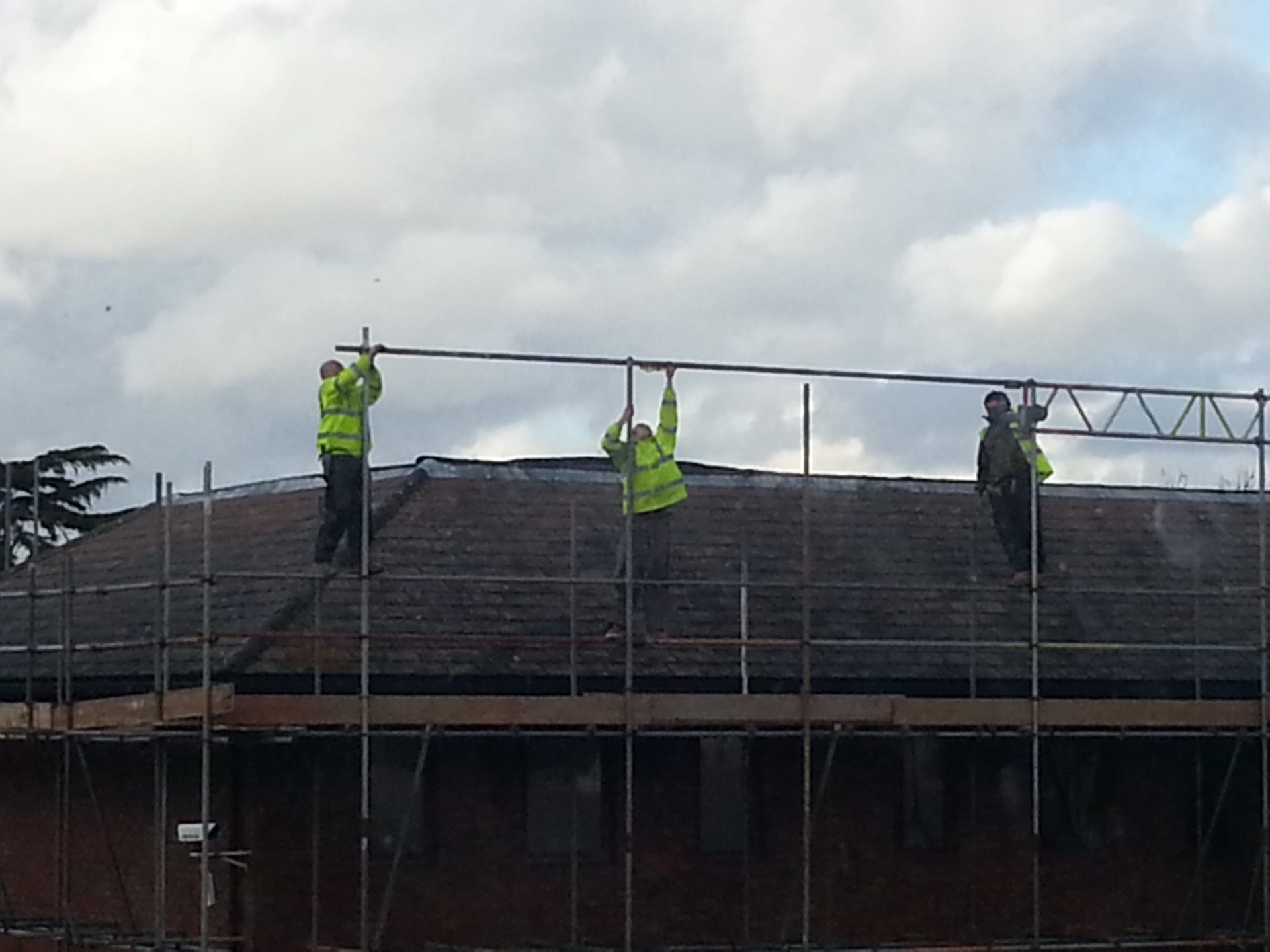Spot The Safety Violation: Owners Should Lead by Example
Are these men safely erecting this scaffolding’

Scaffolds are intended to give workers safe access to areas they can’t otherwise reach. But to be safe, workers must take appropriate precautions not only when using scaffolds but also when erecting this equipment.
This picture resulted in an OHS prosecution in Great Britain by the Health and Safety Executive. It and other photos were taken by a shocked member of the public, who clearly recognized the danger the men faced. What’s even more shocking is that one of the men in the picture is the owner of the scaffold company!
In the picture, the men are seen balancing on a single rail about nine metres above the ground. There are no guardrails to prevent them from falling from this dangerous height and none of them are wearing a harness or other fall protection equipment.
The owner, Jason Hewett, pleaded guilty to violating the Work at Height Regulations 2005 by failing to have any fall prevention measures in place. He was fined 265.
After the hearing, HSE Inspector Amanda Huff said, ‘Jason Hewett put his own life at risk and the lives of two other workers by carrying out this scaffolding job in a totally unsafe manner. Anyone falling from nine metres would likely be killed and that type of disregard for safety is totally unacceptable.’
Bottom line: Members of senior management’including owners’must lead by example and follow safe work procedures and comply with the OHS laws.
TAKE 7 STEPS
To ensure that you comply with the scaffold requirements in your jurisdiction’s OHS laws, take these seven steps:
Step #1: Determine if scaffold is needed. You may be required to use a scaffold or elevated work platform for work that can’t be done from the ground.
Step #2: Select appropriate type of scaffold. If you determine that use of a scaffold is required, select the appropriate type of scaffold, such as a bracket scaffold, single’pole scaffold or rolling scaffold.
Step #3: Ensure scaffold is properly designed and constructed. After you’ve selected the appropriate type of scaffold, ensure that it’s properly designed and constructed. In some cases, you may need to have the scaffold designed by a professional engineer. And when erecting the scaffold, you’ll likely need to comply with requirements in the OHS regulations as to:
- Materials, such as the type of lumber permitted for use in wood scaffolds;
- Supports and beams;
- Brackets;
- Planks and platforms;
- Guarding, including use of guardrails and toe boards;
- Ladders; and
- Bracing.
Step #4: Ensure scaffold can carry expected load. To prevent a scaffold from collapsing, ensure it can carry the load or weight expected to be placed on it by workers, tools, materials and other equipment. In general, a scaffold should be designed to support and capable of holding at least four times the load that’s likely to be on it.
Step #5: Safely locate scaffolds. To ensure the stability of scaffolds, place them on flat, level ground and on a foundation that’s capable of supporting their weight. And rolling scaffolds should be on a floor or surface that’s free from pits, holes, depressions and obstructions. Also, avoid placing scaffolds, especially those made of metal, near overhead power lines.
Step #6: Inspect scaffolds. Have scaffolds inspected before workers use them by an engineer or someone considered a ‘competent’ person. (Use this inspection checklist.)
Step #7: Set safe work practices. Lastly, you should set safe work practices for the workers who’ll be working on scaffolds. One of the most important is to require workers to wear proper fall protection while on a scaffold and when required by your OHS regulations. And make sure to train workers on these safe work practices, such as with a safety talk on avoiding falls from scaffolds.